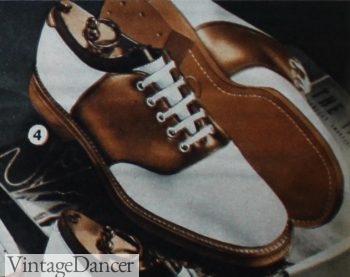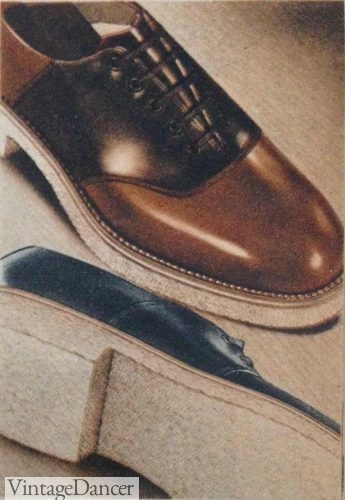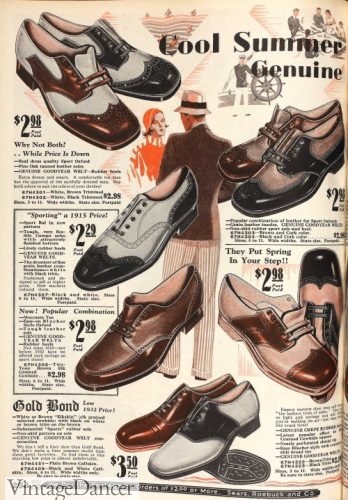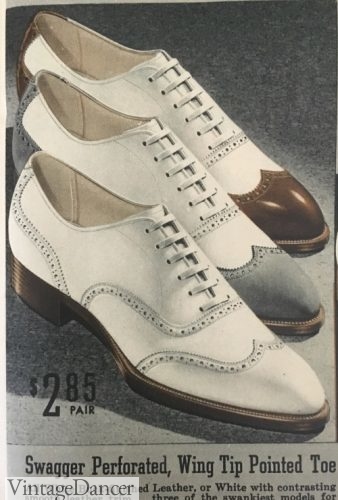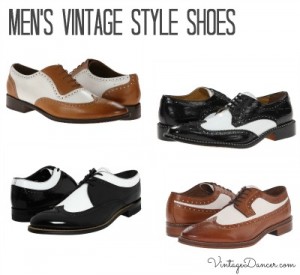For work and office, the Oxford was still the only men’s 1930s shoe — however, it became much fancier in the 1930s. Small perforated holes called broguing appeared on the shoes. In the beginning, some featured a design just on the toe, while others were just around the edging. By the mid 1930s, however, broguing was all over the body.
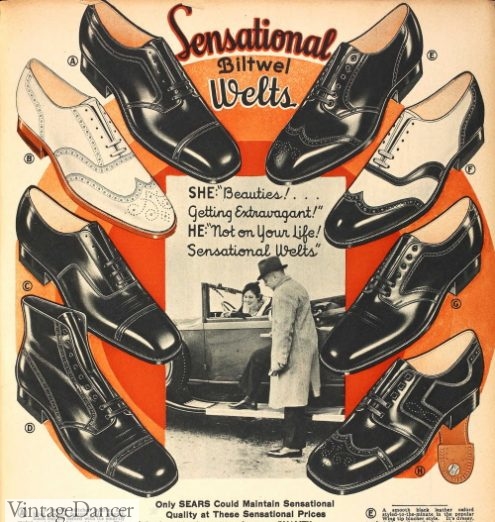
1934 men’s shoe styles
1930s Men’s Footwear Trends
These tiny holes allowed air to flow through, keeping men’s feet nice and cool in the summer. White brogued shoes were especially popular in summer, and two-tone shoes increased in popularity in both summer and winter for sport and dress.
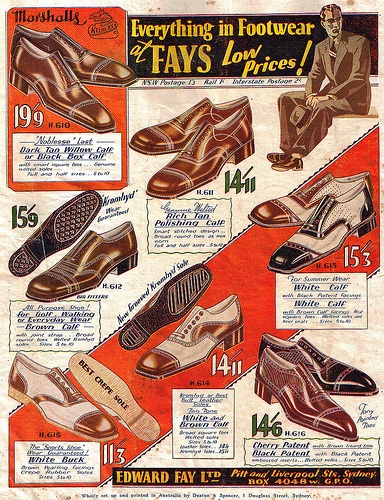
1932 men’s square toe and almond dress shoes
The shape of the toe changed over the years. In the early ’30s, the square toe Oxford was classy. Both solid colors (brown and black) as well as two-tone brown/cream and black/cream combinations were offered for sale. Men wore them with their business suits and casual attire equally.
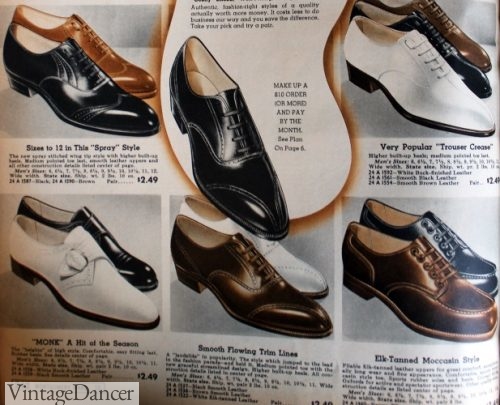
1934 men’s dress shoes – Wingtips, monk strap, moccasin styles
The almond toe replaced the square toe around 1933. It contrasted with the very wide men’s trousers. One shoe, called a moccasin-top dress shoe, kept a round blunt nose shape throughout the decade. It was sometimes seen as a sportier or more casual shoe than the fancy wingtips and cap toe Oxfords.
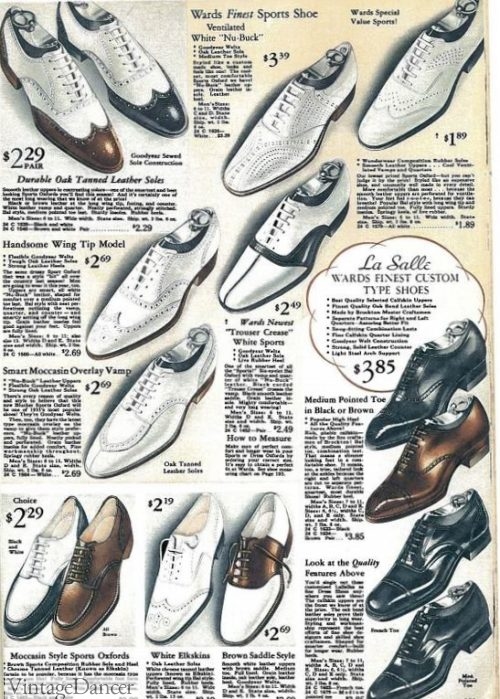
1935 men’s white shoes, two tone oxfords, black and brown dress shoes
1930s Men’s Casual Shoes
The most casual shoes were two-tone brown/white saddles shoes. They were usually worn to play sports or with casual clothing. The “saddle” was a center patch of a dark color over a white shoe body. Other two-tone combinations emerged in the later years such as dark brown on saddle brown or black on blue. The crepe sole was also a popular alternative to plain rubber soles. Read more about the history of saddle shoes here.
- 1938 brown and white saddle shoes
- Saddle shoes with a crepe sole
Two-tone 1930s men’s shoes came in other styles and colors. Grey and black was on trend in the fall and winter. Blue and white and even green and white were novelty summer shoes that didn’t stay in fashion for too long. The difference between two-tone shoes in the 1930s compared to the ’20s, ’40s, and ’50s was the amount of white. 1930s men’s shoes favored a heavy dose of white pattern blocking with minimal darker wingtips, saddles, and edging.
- 1932 two tone sport shoes
- 1937 mens summer shoes wingtip oxfords two tone spectators
All-white shoes were also more popular in the 1930s than in any other decade. When paired with white or grey linen summer suits especially, they looked clean and expensive. These shoes required daily cleaning and polishing to keep them spotless. Most white shoes had brown soles. Wingtips, cap toes, brogue, moccasin, and “Trouser crease” designs all came in white. In winter, they were replaced with solid black or brown.
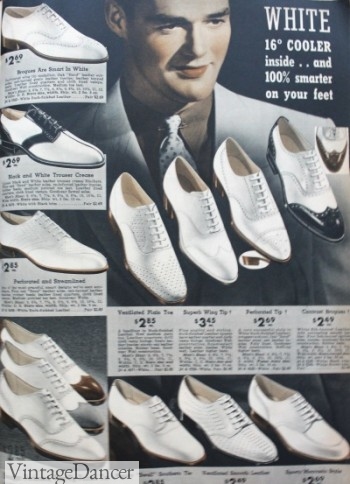
1930s men’s summer white shoes
Brogue and wingtip Oxfords are the easiest shoes to find today, and the most vintage in style for your ’30s wardrobe. Shop here for some great ’30s men’s shoes.
1930s Men’s Summer Shoes
In the 1930s, casual men’s shoes were introduced. The moccasin or loafer shoe for cool weather and the leather sandal for summertime became fashionable. Two-toned patterns of brown and white or black and white moved from the stiff Oxford and brogue to the more casual sports shoes.
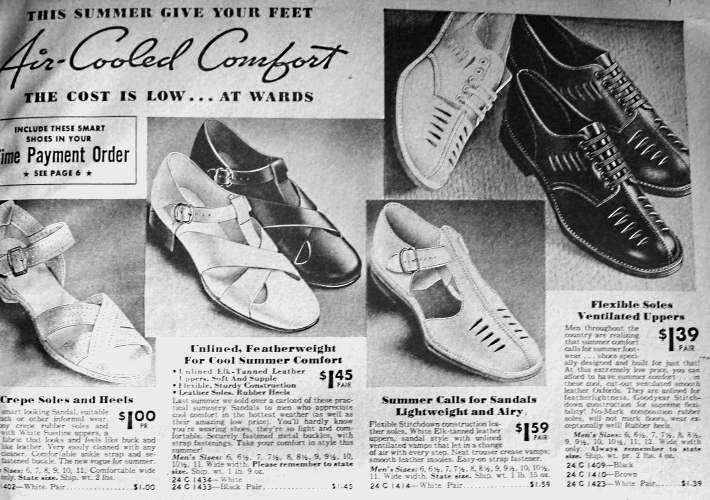
1938 men’s sandals
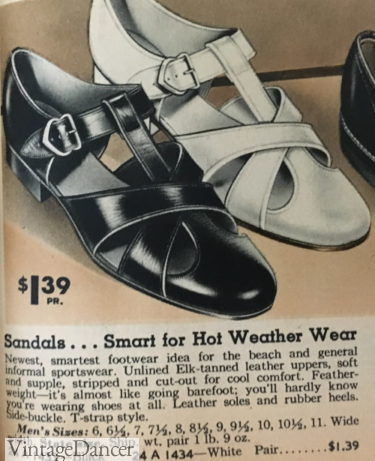
1937 leather sandals
Sandals in leather such as the fisherman style or cross strap sandal had heels and a thin sole. They could also be made of canvas for a crepe rubber sole which resisted the hot sand better than leather soles. A popular summer sandal shoe was an espadrille made of colorful canvas (often striped) with cord or rope ties and rope lined soles. In the late 30s huarache sandals imported from Mexico became very trendy.
Buy men’s vintage style sandals.
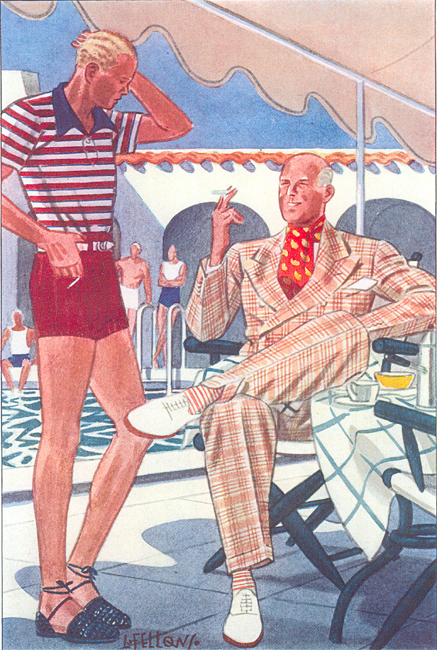
Man wearing espadrille shoes

1939 sandals: canvas sneakers, canvas sandals, huarache leather sandals
There were also air conditioned lace up shoes with cutout vents along the toe box and sides. Small all over holes were also used to create summer friendly shoes in nubuck.
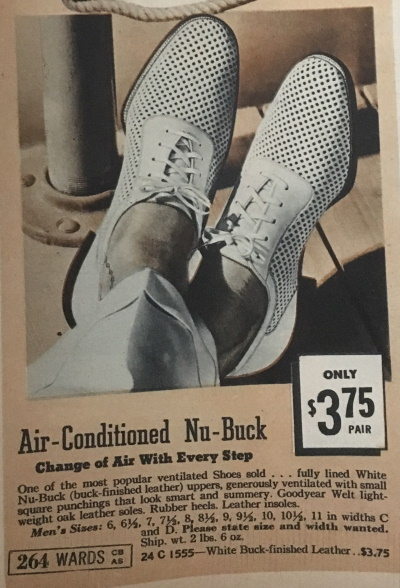
1937 “air conditioned” shoes
1930s Men’s Sport Shoes
Rubber soled shoes, such as Keds, were worn in the 1930s as well. These casual shoes had a sporty look with a comfortable feel. Keds came in all sorts of solid and two tone color combinations in suede or canvas materials. The crepe sole added more bounce in the step. Amazingly, 1930s Keds don’t look much different than men’s classic Keds shoes today, with the exception of a thicker sole.
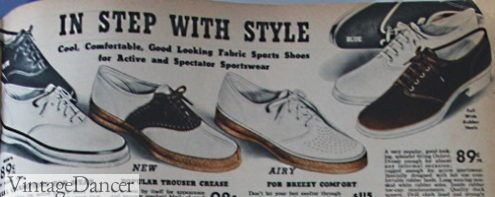
1933 “Keds” style canvas sport shoes
Another sport shoe for actually playing sports like Basketball or football was the high top sneaker. “Skips” were a cheaper brand of the original Converse Hi-Top that came in all white. 1930s high tops came in brown leather, black leather, two tones, and white. Low top canvas or leather sneakers were a less popular but an available option for sports like tennis or summer days at the beach.
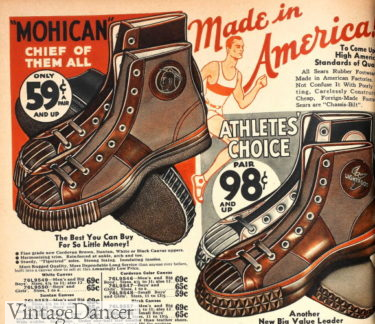
1932 men’ high top sneakers
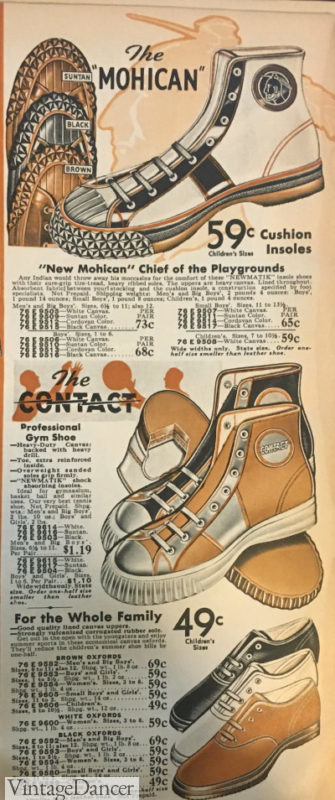
1937 high top and low top canvas sport shoes
More 1930s Boots and Shoes
Learn more about men’s winter boots, snow boots, and rain shoes here.
For workwear boots and shoes read this article.
Men’s vintage slippers styles here.
Shop –> 1930s style men’s shoes
Debbie Sessions has been teaching fashion history and helping people dress for vintage themed events since 2009. She has turned a hobby into VintageDancer.com with hundreds of well researched articles and hand picked links to vintage inspired clothing online. She aims to make dressing accurately (or not) an affordable option for all. Oh, and she dances too.
